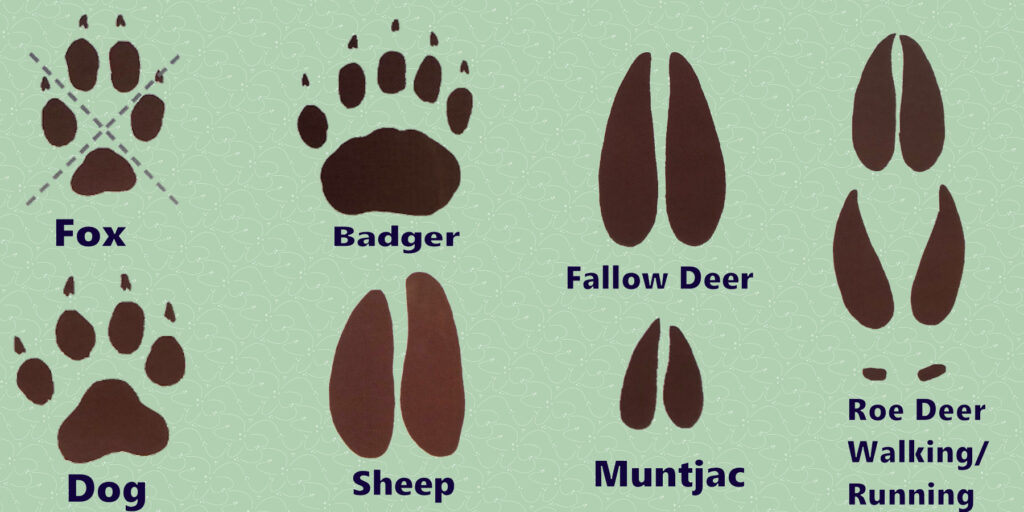Tracks are best observed when the ground is covered in snow, but in muddy areas, especially where the ground is frozen, tracks can be very clear to see.
The structure of the foot reflects the lifestyle of the animal; fast runners such as deer run on their hooves, whereas those that tend to plod, such as badgers, do so on their whole paw. So animal footprints can be divided into two main groups – those with paws and claws and those made by animals with cloven hooves.
When looking at a track made by a paw, particular attention should be made to the number of toes, the shape and size of the claws and pads and their positions. For example, long digging claws on the fore-feet of badgers will always leave a clear track, but there will never be claw marks on domestic cat footprints as they are always retracted when walking.

Mammals with cloven hooves
Hooves leave two parallel bars when walking but become splayed the faster the animal moves. In smaller species, dew claw marks may be present. Compare the sheep track to the deer tracks in the illustration.
Mammals with paws
Badger tracks are fairly easy to identify as they tread heavily and claw marks will be visible. The five toes will be almost in a row. Dog tracks have only four toes and are much squarer than a fox print which is narrower and diamond-shaped (see illustration).
Insectivores such as hedgehogs and shrews have five toes on the fore-feet, whereas rodents only show four. A good pocket resource which goes into more detail of different species is the ‘Guide to British mammal tracks and signs’ by FSC Publications. Many prints will overlap with other similar species, and other evidence such as droppings and feeding remains need to be taken into account. I have multiple photographs of various poos and I will cover this in a later month!
